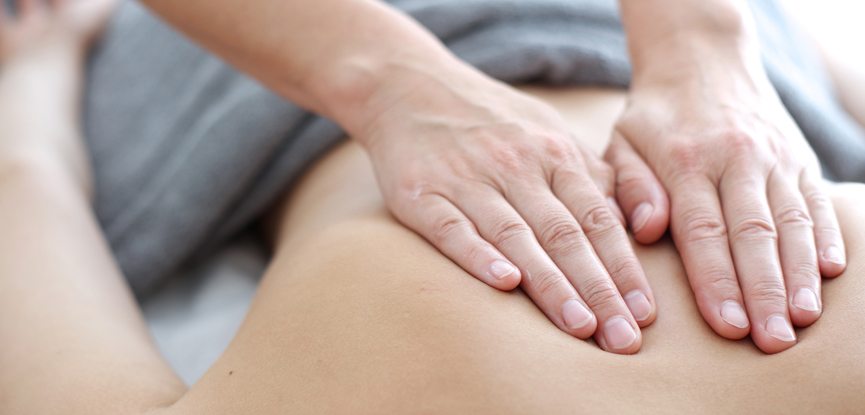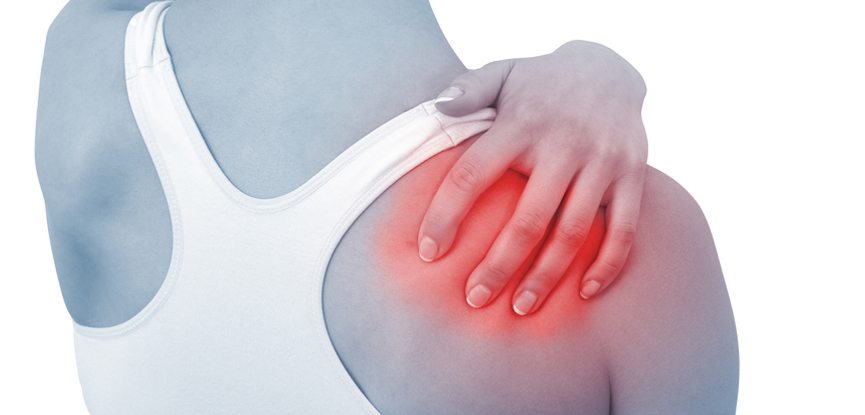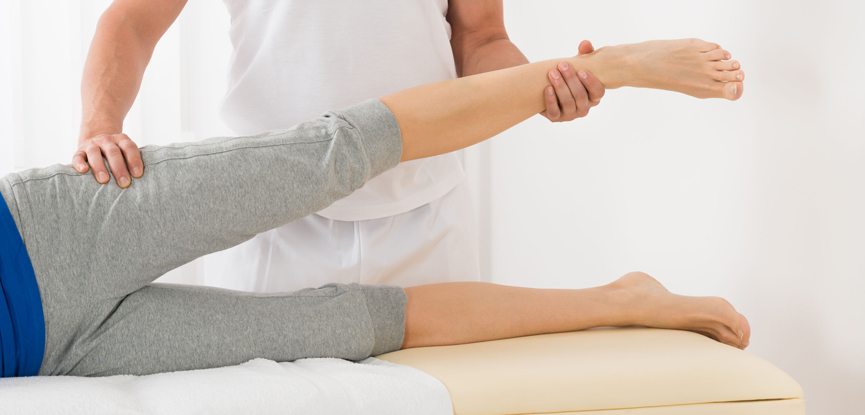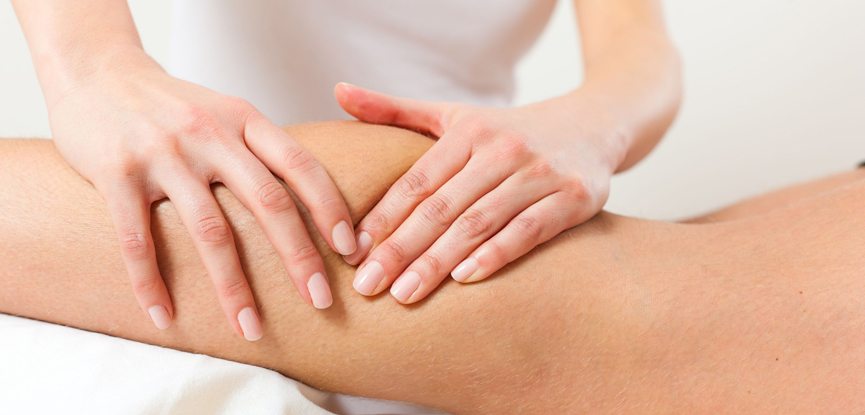Be in the Know
Guided by industry experts, expand your sports massage knowledge our in-depth career articles and guides
Massage focusses on applying pressure and working that pressure across the body with a variety of movements that can be applied with the hands, fingers, elbows, and in some cases with knees and feet. Massage therapy manipulates the soft tissues found in your body in order to enhance health and well-being, and is performed by often performed by qualified sports massage therapists.
There are many different massage therapy methods, but the two fundamental categories are relaxation and rehabilitation. Relaxation tends to focus more on relaxing the muscles and soft tissues, with varying levels of pressure, whereas rehabilitation massage focuses on deep tissues, and is often practised in hospitals, chiropractor offices, and clinics.

Within the category of rehabilitation massage, there are subcategories which focus on different popular techniques. Swedish massage, developed by Dutch practitioner Johann Georg Mezger, focuses on rubbing the muscles with long gliding strokes in the direction of blood returning to the heart, therefore increasing the level of oxygen in the blood, lowering the presence of muscle toxins, and improves circulation and muscle tension. Deep tissue massage is very similar to Swedish massage therapy but performs deeper pressure techniques to release chronic muscle tension; the focus is on the deep layers of muscle tissue, tendons and fascia.
Deep tissue massage is very similar to Swedish massage therapy but performs deeper pressure techniques to release chronic muscle tension; the focus is on the deep layers of muscle tissue, tendons and fascia.
Strenuous exercise can often lead to injuries to your muscles or joints which can lead to acute or chronic inflammation, for example in the instance of tennis elbow. Simple mistakes, such as, not stretching, warming up, or cooling down before/after exercise, or performing an incorrect technique can cause injuries. Even if you do these things, you can often cause some small muscle tears known as micro-injuries, and people who don’t exercise can experience this too, for example, placing your foot down incorrectly on the stairs.

Blood flow increases in the area of the injury, as well as fluid, blood proteins, and white blood cells that move into the tissue; this can often happen immediately after an injury-causing acute inflammation.
In 2014, Dr Nina Franklin and her research team at the University of Illinois at Chicago published their research in the Archives of Physical Medicine and Rehabilitation. The study consisted of three groups with a total number of 36 participants; the groups were split into ‘exertion-induced muscle injury and muscle therapy’, ‘exertion-induced muscle injury only’ and ‘muscle therapy only’. Brachial artery flow-mediated dilation (FMD) was monitored using an ultrasound at each time point: 90 minutes, 24 hours, 48 hours, and 72 hours.
The results showed that participants who received massage therapy on the lower extremities had much higher FMD measurements in the upper extremity after exertion and after rest.

Dr Krista Ingram, who wrote Naturopathic And Massage Perspectives explains in one of her articles that massage therapy can help to decrease the sympathetic nervous system, improve circulation, and remove fluid buildup from the tissues in the body and decrease inflammation. Chronic inflammation is caused by similar triggers as autoimmune disorders, therefore treatment and therapy can often be similar and provide the same benefits.
A further study, researched by Crane et al, from the Buck Institute for Research on Aging and McMaster University in Hamilton Ontario, involved administering either massage therapy or no treatment on the quadriceps of 11 young male participants after muscle damage caused by exercise. The data was collected via muscle biopsies at baseline, ten minutes after massage treatment, and two and a half hours after recovery. The results showed that massage attenuated the production of the inflammatory cytokines tumour necrosis factor–α (TNF-α) and interleukin-6 (IL-6) and reduced heat shock protein 27 (HSP27) phosphorylation. Thus, it would appear that massage therapy administered after exercise that causes muscle damage, can, in fact, be clinically beneficial by reducing inflammation.
The data was collected via muscle biopsies at baseline, ten minutes after massage treatment, and two and a half hours after recovery. The results showed that massage attenuated the production of the inflammatory cytokines tumour necrosis factor–α (TNF-α) and interleukin-6 (IL-6) and reduced heat shock protein 27 (HSP27) phosphorylation. Thus, it would appear that massage therapy administered after exercise that causes muscle damage, can, in fact, be clinically beneficial by reducing inflammation.
Although the small amount of research does indeed point towards the notion that massage therapy can reduce inflammation, we must take into consideration the limitations of the research. In each of the research studies, the number of samples studied is very small, not enough to be able to make a substantial claim. The results, although they were positive towards the notion, were very minor, and again were not significant enough to definitive such a large scientific statement.
Many of the studies surrounding this topic make claims of ‘may’ and ‘appear’ which don’t hold enough weight to have real scientific value. Crane, following research at McMaster University, says “The results hint that massage therapy blunts muscle pain by the same biological mechanisms as most pain medications and could be an effective alternative”. However, based on the research performed, although minor, the results do indicate that over timed intervals, massage therapy can reduce inflammation caused by exercise. On the flip side, exercise itself can change protein production more than massage by around a thousand times more.
However, based on the research performed, although minor, the results do indicate that over timed intervals, massage therapy can reduce inflammation caused by exercise. On the flip side, exercise itself can change protein production more than massage by around a thousand times more.
There are a decent handful of studies which agree that massage therapy can reduce inflammation, there’s no real doubt about it. However, the studies performed, as with most research, do have some significant limitations which were discussed above. However, even though they are minor, and could be considered insignificant, the results of the studies do still exist, no matter how small the participating groups were.

There is certainly no obvious research that suggests massage therapy is counterproductive to muscle inflammation caused by exercise. Additionally, aside from massage therapy that focuses on reducing inflammation, massage therapy can potentially prevent injuries from occurring, especially micro-injuries. Those that participate in regular physical activity might find benefits in attending massage therapy to increase flexibility and other non-medical benefits that could lessen the chance of injury and promote a faster recovery.
The results confirm that massage therapy can reduce inflammation, if administered correctly through professional massage therapists, however, you may find that simply performing light exercise will reduce inflammation more effectively.
Test your knowledge and understanding of sports massage with our Level 3 Sports Massage Mock Exam.
References
Franklin NC, Ali MM, Robinson AT, Norkeviciute E, Phillips SA. Massage therapy restores peripheral vascular function after exertion. Archives Physical Medicine and Rehabilitation, June 2014;95(6):1127-34.
Dr Krista Ingram, ND & Sarah Robson, RMT. 2012. Chronic Inflammation: Naturopathic And Massage Perspectives – Balance Natural Health Clinic. [ONLINE]
J. D. Crane, D. I. Ogborn, C. Cupido, S. Melov, A. Hubbard, J. M. Bourgeois, M. A. Tarnopolsky. Massage Therapy Attenuates Inflammatory Signaling After Exercise-Induced Muscle Damage. Science Translational Medicine, 2012; 4 (119): 119ra13 Available here
McMaster University. 2012. Massage is promising for muscle recovery: McMaster researchers find 10 minutes reduces inflammation. [ONLINE] Available here
Back to articlesAnd discover more about the world of massage therapy
Great news, you're on the list...